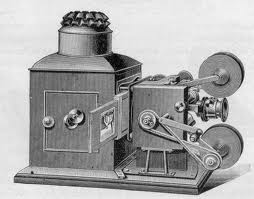Hello and welcome to Fairy Tale Friday. Are you
sitting comfortably? Good. Then I’ll begin.
For the next few weeks we are going to look at silent
film versions of the classic tale of Cinderella. I will start with the oldest I
can find by Georges Méliès.

According to Wikipedia:
Méliès was a French illusionist and film director who
led many technical and narrative developments in the earliest days of cinema. Méliès was
well-known for the use of special
effects, popularizing such techniques as substitution splices, multiple
exposures, time-lapse photography, dissolves,
and hand-painted colour. He was also one of
the first filmmakers to use storyboards. His
films include A Trip to the Moon (1902) and The Impossible Voyage (1904), both
involving strange, surreal journeys somewhat in the style of Jules Verne,
and are considered among the most important early science fiction films, though their
approach is closer to fantasy.
He also experimented with “stag films.” His most famous of these risque films was After the Ball. "The film's
plot is a one-minute scene of a servant bathing a woman, along with the
scenarios before and after as the servant is helping her get undressed (down to
a bodystocking which simulates nudity) while revealing a few layers of
clothing, bathing her, and finally covering and drying her with a robe. This is
the earliest known film to show
simulated nudity." (again thanks to Wikipedia for that information.)
If you would like to watch it click{HERE}
This film of Cinderella was made in 1899 and features
several elements we recognise and a few that are really strange. It begins with Cinderella begging her
stepmother to go to the ball and then being refused. Her fairy godmother
appears, and our protagonist brings a crate of live animals who transform into larger
papier mache animals and then to footmen for her coach. Similarly a real pumpkin
is transformed into a giant fake one and then a carriage. Her fairy godmother
gestures sternly at the wall which I presume there hangs a clock, but it is
hard to see as this is in black and white and 121 years old. When Cinderella
leaves for the ball the godmother disappears down a trap door (much like the
effect that was used in the 1939 Wizard of Oz where the witch of the west
leaves Munchkinland.) We see Cinders and the prince at the ball dancing away to
some waltzy music (as opposed to the jaunty music at the start of the film)
when suddenly who should appear but Father Time with an enormous white beard
holding a huge clock showing it is midnight. He somersaults into a puff of
smoke and disappears. Her fairy godmother shows up and waggles her finger and
turns our heroine’s dress back to rags. The Father Time bit was weird but made
sense in the context of the showing it is midnight part of the story, but then
he reappears at her house with a bunch of dancing girls who all turn to giant
clocks and torment her. Then it goes back to be the tale we know—the slipper is
tried on and it ends with a wedding with some exuberant dancing by girls
outside the church who look suspiciously like they were the ones being clock
tormentors.
Watch the film here:
This film and its effects are amazing since it was
made in 1899. I have long been a fan of Georges Méliès so this was a delight to
find.
That’s all for this week. Stay tuned next week for another look into the silent film industry and Cinderella.
No comments:
Post a Comment